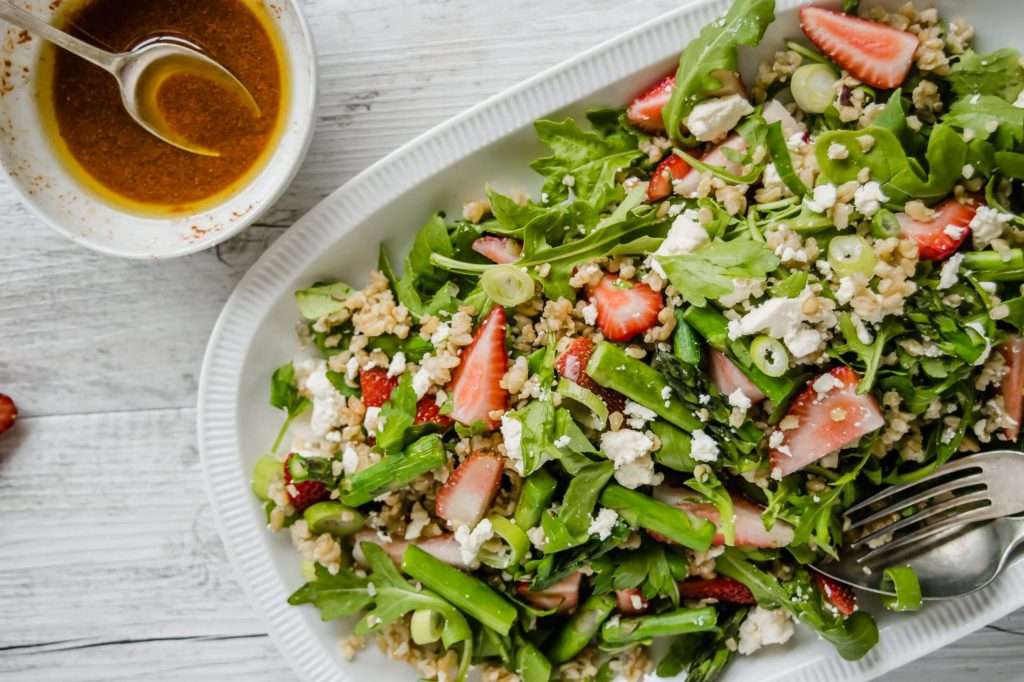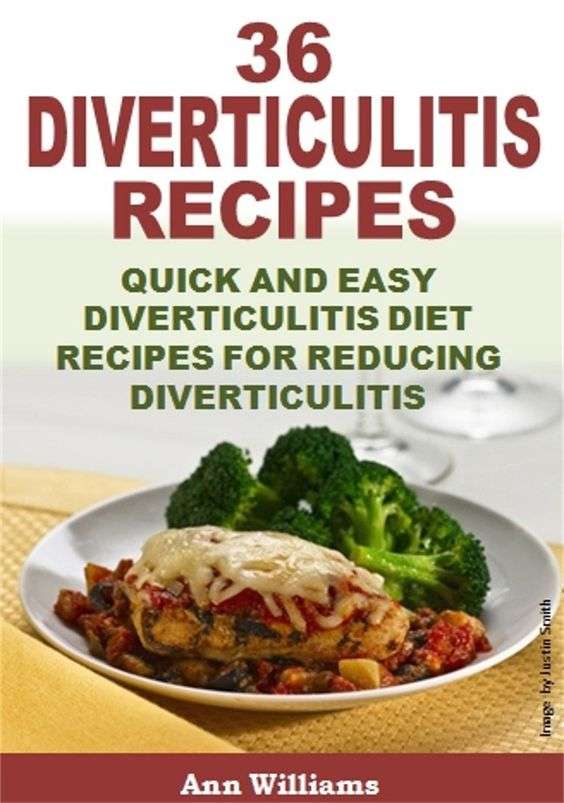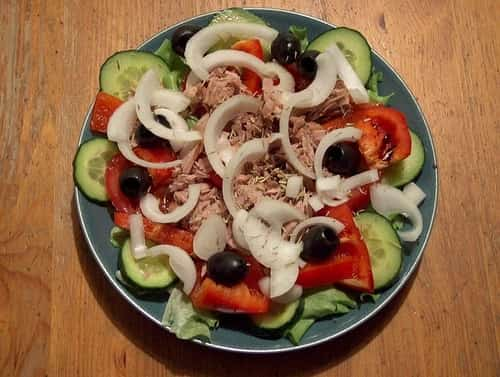Risks Of The Diverticulitis Diet
Because of the reduced food intake, especially in the first few days, you may not be getting enough nutrients. Speak to your doctor to determine if this diet is safe for you. In most cases, they may supplement those nutrients using an IV.
Although increasing daily fiber intake can help soften stool and facilitate bowel movements, increasing too quickly can cause discomfort, pain, and increase gas . It is important to transition to a high-fiber diet only when no symptoms are present with a low-fat diet or when your doctor determines your diverticula are no longer inflamed.
What is the reasoning behind these dietary restrictions?
What Are Some Other Nutritional Needs Of People With Or At Risk For Diverticulitis
An overall nutrient-rich diet that includes naturally occurring foods containing fiber is the best way to eat for diverticulosis and diverticulitis prevention. The U.S. Department of Agriculture Dietary Guidelines suggest that we vary our protein sources.
That means increasing your intake of fish and enjoying vegetarian meals with plant-based protein, along with keeping any meat or poultry you eat lean. If youre having trouble adjusting your diet, consider adding a registered dietitian to your healthcare team. You can find one at EatRight.org.
That said, there are some foods you should eliminate from your diet if youre managing an active case of diverticulitis.
Vegetables To Avoid For Diverticulitis
Vegetables are good for you there’s no denying that. But when you’re having a diverticulitis flare-up, they can make matters worse. The good news is that, if you have diverticular disease, diet changes like avoiding vegetables can help you manage the condition and give you some relief.
Video of the Day
However, when the flare-up and inflammation are back under control, reintroducing fiber-rich vegetables slowly into your diet can help reduce the risk of having a recurrent attack.
Also Check: Best Salad Dressing To Buy
How Do You Keep Diverticulosis Under Control
How Can I Prevent Diverticulitis?Eat more fiber by adding whole-grain breads, oatmeal, bran cereals, fibrous fresh fruits, and vegetables to your diet. Bulk up your diet by adding an over-the-counter preparation containing psyllium, derived from the plant Plantago psyllium.More itemsJan 24, 2020
Are There Foods I Should Avoid If I Have Diverticulitis

The general advice is to adopt the diverticulitis diet. Avoid foods that are high in fiber when you have a diverticulitis attack, and once the symptoms go away, slowly increase your fiber intake to restore regular bowel movements and reduce the risk of future flare-ups.
In the past, doctors would advise patients with diverticulitis to avoid certain foods that were thought to increase gut inflammation and worsen the condition. These foods included nuts and seeds, popcorn, some vegetables and fruits, whole wheat, acidic, sugary, and fatty foods, and other processed foods. Sounds crazy, right? What can you eat?
The truth is that few studies have looked at what foods are good or bad for diverticulitis, and none have found evidence supporting the need to avoid certain foods. In fact, a 2008 study published in the Journal of the American Medical Association found that nut, corn, and popcorn consumption did not increase the risk of diverticulitis. That being said, each person is unique, and certain foodsparticularly foods high in fiber and residuesmay still trigger diverticulitis attacks for some people. This has led to mixed advice on what should and shouldn’t be eaten.
Recommended Reading: Joseph Joseph Salad Bowl With Servers
How To Manage Diverticulitis With Diet
While newly-diagnosed people often feel overwhelmed by the limitations of a diverticulitis diet, the good news is that you dont need to be overly restrictive with what you eat. There are a few golden rules when it comes to choosing safe foods for diverticulitis that can make it easy to keep your stomach happy.
Are Alcohol And Coffee Bad For Diverticulitis
Not necessarily, though you definitely want to avoid alcohol and caffeine if youre experiencing a diverticulitis attack.
Coffee is a bowel stimulant, so if youre having an attack you might want to stay away and rest your bowel, says Dr. Boling, but in the long run, people who have recovered can drink it.
The same goes for alcohol, though Dr. Boling does warn that alcohol is hard on your stomach in generaland symptoms of other health conditions, likepancreatitis, can be similar to symptoms of a diverticulitis flare .
Don’t Miss: Chicken Salad Chick Fruity Fran Chicken Salad
Can You Drink Alcohol If You Have Diverticulitis
The common advice is to avoid alcohol when experiencing digestive problems. However, according to a recent meta-analysis published in the Hawaii Journal of Medicine and Health, regular alcohol consumption was not found to be associated with incidences of diverticulosis or diverticular attacks and did not increase the likelihood of being diagnosed with either condition. That being saidlike with all other foods in this guideits best to consume alcohol in moderation. If you notice any increases in discomfort, stop drinking immediately.
You May Like: Spode Blue Italian Salad Servers
Why Is Fiber Important In Digestive Health
Studies suggest that people in Africa and Asia, where high-fiber diets are common, rarely suffer from diverticular disease. On the other hand, diverticulitis is seen in up to 50 percent of the population of Finland due to low fiber intake and an aging population.
Fiber, or plant material, serves an important role in the digestive process, softening stool and helping it move more smoothly through the colon. A lack of fiber can cause constipation, which makes stools harder and more difficult to pass, putting stress on the muscles of the colon.
And because diverticula typically form in areas where digestive muscles are strained or weakened, constipation may make the development of diverticula more likely.
Because constipation causes pressure to build up in the colon, it may also lead to inflammation or infection of diverticula that are already present in the colon, causing diverticulitis.
Luckily, high-fiber foods arent difficult to find.
Don’t Miss: Hidden Valley Pasta Salad Recipe
What Is Diverticular Disease
Diverticulum is a medical term based on the Latin word for a byway or diversion from the normal pathway. What it describes are small, bulging pouches in the lining of the gastrointestinal tract. Think of these not as holes, but small hollows in the wall of the bowel. The majority of these bulges do not cause any symptoms and are often only found by coincidence during an examination being performed for some other medical condition, like a routine colonoscopy.
When these bulges exist with no pain or symptoms, the condition is known as diverticulosis. However, when faeces and food particles get caught in these pockets and cause them to become infected or inflamed, the condition is called diverticulitis. Symptoms often include crampy pain and tenderness, usually in the left side of the lower abdomen, and possibly nausea. Depending on the severity of the infection, you may also experience a fever, chills and fatigue.
Collectively, diverticulosis and diverticulitis are known as diverticular disease.
During And After A Flare
If youre having or recovering from a diverticulitis flare, you may need to give your bowel time to rest. Many nutritious, high-fiber foods you enjoy when youre feeling welland that are typically beneficial for your conditionmay be difficult to digest while youre healing.
Your healthcare provider might suggest you follow a low-fiber or low-residue diet, or even a liquid diet until you feel better. The same can be said if you are experiencing complications from diverticulitis, such as narrowing of the bowel or pockets of infection .
Foods included in this temporary healing diet include:
- Applesauce
- White bread
- White rice
Gradually, you’ll be able to add foods back until you’ve returned to your regular way of eating for diverticulitis management.
Recommended Reading: What Do You Put In Tuna Fish Salad
Foods That Help Manage Your Diverticulitis
Research shows that people who consume a fiber-rich diet have fewer chronic illnesses. Eating a high-fiber meal reduces your chances of getting heart disease, Type 2 diabetes, and certain cancers. Youll also be less likely to gain weight. Adult women should consume 25 grams a day, while men should consume 38 grams per day to maintain a healthy diet.
What Does Diverticulitis Mean

You should also know about diverticulitis before figuring out if a salad is bad or good for this health condition.
Diverticulitis is a condition where small pouches develop in your large intestine .
These pockets are called diverticula.
The pouches can become inflamed, causing pain, and other symptoms like diarrhea, nausea, or bloating.
This can be caused by eating a low-fiber diet thats high in fat and sugar, or even a diet that is too high in fiber can also be a reason.
People who have diverticulitis may not have any symptoms, but chances they can have sudden pain sometimes.
Also Check: Can Dogs Have Chicken Salad
Preventive Diet For Diverticular Disease
Although a lower fiber diet has its place in treating acute diverticulitis flare-ups, the NIDDK recommends that, conversely, for people who already have diverticulosis and want to try to prevent diverticulitis developing, a high fiber diet could potentially help.
Increasing the fiber in your diet should only be done when you aren’t experiencing acute symptoms and following discussions with your doctor, as the benefits aren’t clear cut in all cases. Also, how much and how quickly you increase fiber in your diet may need to be monitored by a health professional to reduce your chances of having stomach gas and pain.
Meat is fiber-free, which is one reason you should not have a diet that is too meat-heavy, allowing space on your plate for higher fiber plant protein sources.
The Mayo Clinic says the way that high-fiber foods, such as fruits, vegetables, whole grains and soya help is by softening waste, helping it pass more quickly through your colon. This reduces pressure within your digestive tract, which may help reduce the risk of diverticula forming and becoming inflamed.
The Mayo Clinic adds that in the past, people with small pouches present in the lining of the colon were told to avoid nuts, seeds and popcorn, as it was thought that these foods could lodge in the pouches, causing irritation and inflammation.
Can I Eat Tomatoes With Diverticulitis
diverticulosisdiverticulitistomatoeseat
. Similarly, can you eat tomatoes if you have diverticulitis?
If these foods do not seem to cause stomach pain, you may eat them. The seeds in tomatoes, zucchini, cucumbers, strawberries, and raspberries, as well as poppy seeds, should not cause any problems. Other sources of fiber include other vegetables, fruits, flax seeds, nuts, and whole grains.
Similarly, what vegetables can I eat with diverticulitis? Examples of low-fiber foods include:
- Canned or cooked fruits without skin or seeds.
- Canned or cooked vegetables such as green beans, carrots and potatoes
- Eggs, fish and poultry.
Read Also: Salad And Go Breakfast Time
Read Also: Tomato Mozzarella Basil Balsamic Salad
What Should I Eat And Drink If I Have Diverticular Disease
If you have chronic symptoms of diverticular disease or if you had diverticulitis in the past, your doctor may recommend eating more foods that are high in fiber.
Talk with a health care professional, such as your doctor or a dietitian, to plan meals with the right amount of fiber for you. Health care professionals may recommend increasing the amount of fiber you eat a little at a time, so your body gets used to the change.
The amount of fiber in a portion of food is listed on the foods Nutrition Facts label. Some examples of fiber-rich foods are listed in the table below.
Foods That Can Worsen Diverticulitis
Diverticulosis is a widespread digestive condition.
Researchers say it affects approximately 35% of the United States young adult population up to age fifty. The chances of getting diverticulosis increases as you age. Diverticulosis may turn into a severe condition called diverticulitis. Diverticulitis has painful side effects. If you suffer from diverticulitis, you know the challenge of keeping it under control. So, what ten foods make diverticulitis worse? What ten foods help you manage it?
Also Check: What Kind Of Salad Dressing Can A Diabetic Eat
When Things Get Serious
Most bulges are small, ranging from 3mm to just over 3cm in diameter, and rarely require treatment. Very occasionally, however, inflamed pouches can rupture and require immediate surgery. Sometimes an infection can cause damaged tissue from neighbouring organs to stick together, forming a fistula or abnormal opening, which also requires immediate medical attention.
Related Faq For What Foods Can Aggravate Diverticulosis
How do you keep diverticulosis under control?
Prevention. The best way to help prevent diverticulitis is to keep diverticulosis under control. That means eating a high fiber diet which requires 20 to 35 grams of fiber each day. Fiber is found in grains, vegetables, and fruits.
Can diverticulosis go away?
You likely wont even have symptoms if you have diverticulosis. If you have a mild case of diverticulosis, it may go away on its own without treatment. Up to 30% of people with diverticulosis do develop diverticulitis. Between 5% and 15% will develop rectal bleeding.
Can you reverse diverticulosis?
Once you developed diverticula, they are unlikely to go away. Bleeding and inflammation are two common complications of diverticulosis. Diet plays an important role in the prevention of the progression of diverticulosis, but will not be able to reverse the process.
Is Chicken bad for diverticulitis?
Higher consumption of poultry/fish was not associated with risk of diverticulitis. However, the substitution of poultry/fish for one serving of unprocessed red meat per day was associated with a decrease in risk of diverticulitis .
What snacks can I eat with diverticulitis?
Examples of low-fiber foods include:
How do I know if my diverticulitis is flaring up?
Also Check: Dressing For Potato Salad With Mayo
What Meats Can You Eat With Acute Diverticulitis
Diverticulitis is debilitating, so it’s important that your diet won’t make it worse. If you enjoy steak or a cooked breakfast, you’ll want to know if there’s an issue with red meat and diverticulitis or bacon and diverticulitis, for example. The answer seems to be: “It’s complicated.”
Video of the Day
Tip
Meat and poultry are low-fiber foods that are among the safe ones to eat when you are dealing with a diverticulitis flare-up. However, a high red meat diet might not be good if you donât already have diverticulitis and donât want to develop it.
Diverticular Disease: Diverticulosis Vs Diverticulitis

Diverticular disease means you have polyps called diverticula in your gut. These polyps can exist without causing any symptoms and without you even knowing theyre there. This is called diverticulosis.
If the polyps become inflamed or infected, they can cause symptoms such as abdominal cramping, pain or tenderness in the area, swelling, bloating, constipation or diarrhea. This is called diverticulitis.
Recommended Reading: Where Can I Get A Good Salad Around Me
Treatment For Acute Diverticulitis
Acute diverticulitis often requires a visit to your GP who, depending on the severity, may advise bowel rest liquid only intake for a few days. You may also need antibiotics to fight off infection or even need to be admitted to hospital.
During a flare-up, a low-fibre intake will be advised to prevent further irritation and allow the bowel to heal. This means eating easily digested foods such as white bread and rice, and avoiding fibrous foods like seeds, nuts, legumes and the skin on fruits and vegetables. Quite the opposite of our usual healthy-eating advice! Its also best to avoid raw foods, especially salads, and opt for soft or cooked vegetables and fruit instead.
As inflammation eases, youll be advised to gradually wean yourself back onto a higher fibre intake to help make your bowel movements more comfortable and prevent constipation and more pouches from developing. You may be recommended products like psyllium husks to help increase stool volume.
Foods like yoghurt and kefir, which contain protective probiotics, may also be of benefit, especially if youre taking antibiotics to help treat infection. Consuming probiotic-rich foods can help you re-establish healthy bacteria in your intestine.
Your GP may also recommend you visit a qualified dietitian to assist in devising a personalised food management strategy.
Diet For Diverticulitis Flare
If youre experiencing an acute diverticulitis attack and want to rest your bowel so it can recover faster, you might want to go on a clear liquid diet for one to two days, advises Dr. Boling. This means you can consume clear liquids of all kinds, including chicken broth, water or ice chips, Gatorade, no-pulp juice, herbal tea, or even Jell-O .
In other words, if you can see through it, you can eat or drink it, says Dr. Bolingand this type of short-term diet can be used to recover from an acute attack, to preempt an oncoming attack , and even alongside antibiotics, should your healthcare provider prescribe them.
Symptoms of a diverticulitis flare-up include:
- Pain, often on your lower left side
- Nausea and vomiting
Once the flare is under control, you can return to normal eating habits.
Also Check: Electrolux Vp2 Electric Salad Spinner
What Does Poop Look Like With Diverticulitis
Rectal passage of red, dark or maroon-colored blood and clots occur without any associated abdominal pain if there is no diverticulitis, but bleeding into the colon also may occur during an episode of diverticulitis. Blood from a diverticulum of the right colon may cause the stool to become black in color.
Is walking good for diverticulitis?
Data from this large prospective cohort suggest that physical activity lowers the risk of diverticulitis and diverticular bleeding.
Can you eat salad with diverticulosis?
You can add vegetables to the foods that you are eating or have soup, salad or cooked vegetables on the side Increasing your fiber intake slowly And taking in enough fluids along with the high fiber foods.